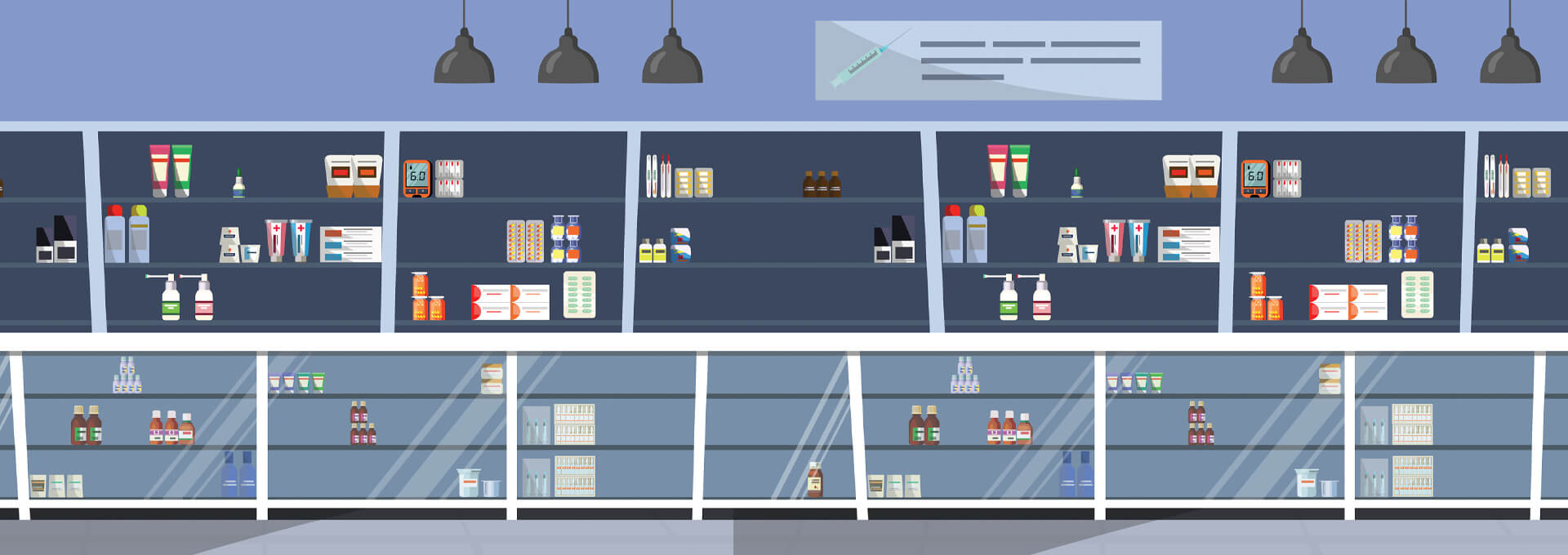The High Cost of Cheap Drugs A Broken Economic Model Behind Record Drug Shortages

In recent years, the global healthcare landscape has been grappling with an alarming rise in drug shortages, especially within the United States. These shortages have exposed a broken economic model prioritizing cost-cutting over sustainability and patient care.
At the core of this crisis is a race to the bottom in drug pricing, especially for sterile injectable products. The consequences of these practices are severe, leading to a lack of investment in manufacturing capacity, a weakened supply chain and, most disturbingly, an increased risk to patient health and safety.
The Broken Economic Model
The current drug-pricing system, especially in the generic pharmaceutical market, has been designed to drive prices down. While this initially appears beneficial to patients and healthcare providers, the long-term effects of this cost-cutting have become catastrophic. Under pressure to produce drugs as cheaply as possible, manufacturers have reduced investments in modernizing and expanding production facilities. These events have led to outdated infrastructure, inadequate quality control and a lack of redundancy in manufacturing capacity.
Sterile injectable products, which account for most of the current shortages, are particularly vulnerable. These drugs are often very old compounds, life-saving, and include antibiotics, chemotherapies, anesthetics and critical care medications. However, their production is complex and requires specialized facilities that adhere to stringent sterilization processes. With little financial incentive to invest in such costly and specialized infrastructure, many manufacturers have scaled back production or exited the market. As a result, the few remaining manufacturers are strained, leading to frequent disruptions in the supply of these essential medications.
Outsourcing to India and China: A Fragile Supply Chain
To further reduce costs, pharmaceutical companies have increasingly moved the production of raw materials and finished drugs to countries like India and China. While this shift has succeeded in lowering manufacturing costs, it has also introduced significant vulnerabilities into the supply chain. Many active pharmaceutical ingredients (APIs) required for sterile injectable products are now sourced from a handful of foreign suppliers, creating a fragile and easily disrupted system.
While capable of producing at scale, these countries have faced quality control and regulatory oversight issues. Several high-profile recalls and factory shutdowns due to contamination and quality failures have only exacerbated the shortages. Furthermore, the global nature of this supply chain has made it less resilient to crises such as geopolitical tensions, natural disasters and public health emergencies, all of which can quickly cut off the supply of critical drugs to the U.S. market.
The Financial Impact on Pharmacies and Hospitals
 The financial toll of these drug shortages has been significant for pharmacies and hospitals. Many healthcare providers have been
forced to turn to secondary markets where prices for scarce drugs can skyrocket to cope with inconsistent supplies. The added cost of purchasing essential medications at inflated prices and the need to manage shortages through alternative therapies
or rationing have strained already tight budgets. In many cases, smaller hospitals and clinics cannot absorb these additional costs, further restricting access to vital medications for needy patients.
The financial toll of these drug shortages has been significant for pharmacies and hospitals. Many healthcare providers have been
forced to turn to secondary markets where prices for scarce drugs can skyrocket to cope with inconsistent supplies. The added cost of purchasing essential medications at inflated prices and the need to manage shortages through alternative therapies
or rationing have strained already tight budgets. In many cases, smaller hospitals and clinics cannot absorb these additional costs, further restricting access to vital medications for needy patients.
Pharmacies, too, have struggled. The need to constantly monitor supply levels, identify alternative sources and navigate regulatory hurdles to acquire restricted drugs has placed an immense administrative burden on pharmacists. This burden, combined with the financial pressure of higher drug prices, threatens the stability of the pharmacy system that millions of Americans rely on for their medications.
Impact on Patient Care and Lives
The human cost of drug shortages cannot be overstated. When sterile injectable drugs are unavailable, patient care is compromised. Delays in critical treatments, such as chemotherapy or emergency surgeries, can lead to worsened outcomes and, in some cases, even death. According to various reports, several patient deaths have been directly attributed to drug shortages, with patients either receiving delayed care or substitute therapies that were less effective or more toxic.
The emotional toll on patients and their families is profound. For individuals battling life-threatening illnesses, the uncertainty surrounding their treatment options can be devastating. Healthcare providers, too, are put in the impossible position of making triage decisions, prioritizing certain patients over others, due to the limited availability of necessary medications.
What U.S. Lawmakers and Policymakers Are Doing
Recognizing the growing threat posed by drug shortages, U.S. lawmakers and policymakers have begun taking steps to address the root causes of this crisis. The U.S. Food and Drug Administration has been improving reporting mechanisms for drug shortages and increasing transparency around supply chain vulnerabilities. Additionally, the Biden administration has called for increased domestic production of critical pharmaceuticals, aiming to reduce reliance on foreign suppliers.
Some lawmakers have introduced legislation to incentivize investment in U.S. manufacturing capacity, including tax credits for companies that build or upgrade sterile injectable production facilities. There are also calls for more stringent regulatory oversight of foreign suppliers to ensure that quality control issues do not further disrupt the drug supply chain.
Another focus has been on reshaping the economic incentives that drive drug pricing. Proposals to create more sustainable pricing models for essential medications have been discussed to make the production of low-cost generics financially viable for manufacturers while ensuring that patients have access to life-saving drugs.
What Can You Do To Reduce Drug Shortages?
I know and understand that most individuals reading this article can not directly address the broken economic model; however, we all can be advocates for change. Here is how:
- Collaborate with Lawmakers and Policymakers and Advocate for Change
Advocate for Policy Change: Pharmaceutical professionals can work closely with lawmakers and regulatory bodies to push for policies that promote domestic production, streamline regulatory processes and incentivize investment in critical drug manufacturing. One example would be to send an e-mail or a letter to your elected officials. If enough of us do this, we will make an impact. - Participate in Drug Shortage Task Forces
Professionals can actively engage in industry-wide initiatives and task forces focused on drug shortages. By collaborating with the FDA, healthcare providers and supply-chain experts, they can contribute to creating contingency plans, identifying risk areas and developing early warning systems for potential shortages. - Advocate to Adopt Innovative Supply Chain Management Practices
Real-time Monitoring: Implementing advanced data analytics and real-time monitoring systems can help predict potential disruptions before they lead to shortages. This data enables companies to respond quickly to demand fluctuations or supply chain issues and adjust production accordingly.
Stockpiling Critical Drugs: Establishing strategic stockpiles for essential medicines, mainly those prone to shortages, like sterile injectables, can ensure a steady supply during unexpected disruptions. - Enhance Manufacturing Capacity and Quality Control
Advocate for Investment in Infrastructure: Manufacturers can invest in modernizing and expanding their facilities, especially for sterile injectable products, which are often at the center of shortages. This investment includes upgrading equipment, adopting advanced manufacturing technologies and building redundancy into production processes to ensure continuous supply even during disruptions.
Advocate for Improving Quality Assurance and Lead by Example: Ensuring robust quality control processes can prevent manufacturing delays caused by product recalls, contamination or regulatory noncompliance. Pharmaceutical companies should adopt best practices in good manufacturing practices to minimize quality-related disruptions. - Diversify the Supply Chain
Advocate for an Increased Supplier Base: Sourcing critical raw materials and APIs from multiple suppliers across different regions can reduce dependence on a single country or supplier, improving supply chain resilience. Pharmaceutical professionals should work to create a more geographically diverse and reliable supplier network.
Develop Domestic Production: Companies can invest in domestic production capabilities to reduce reliance on international supply chains, particularly from regions like India and China. This nearshoring helps mitigate the risk of geopolitical or logistical disruptions that impact drug availability. - Develop Contingency Plans
Advocate for Emergency Production Plans: Pharmaceutical companies should have contingency plans to shift production from one facility to another in case of a shortage or manufacturing issue. These plans should include agreements with contract manufacturers to step in when primary facilities are down.
Conclusion
The high cost of cheap drugs has exposed a broken economic model that has led to record levels of drug shortages, particularly for sterile injectable products. The healthcare system has created a fragile supply chain vulnerable to disruption by prioritizing low prices over long-term sustainability. The lack of investment in manufacturing capacity, the outsourcing of production to foreign countries and the financial pressures on healthcare providers have combined to create a crisis that threatens patient care.
While policymakers are taking steps to address these issues, much work remains to be done. A comprehensive approach that incentivizes domestic production, improves supply-chain transparency and ensures that drug pricing reflects the actual cost of quality and reliability is essential to prevent future shortages. Ultimately, the solution lies in creating an economic model that balances affordability with the need for a resilient and sustainable drug supply system.



